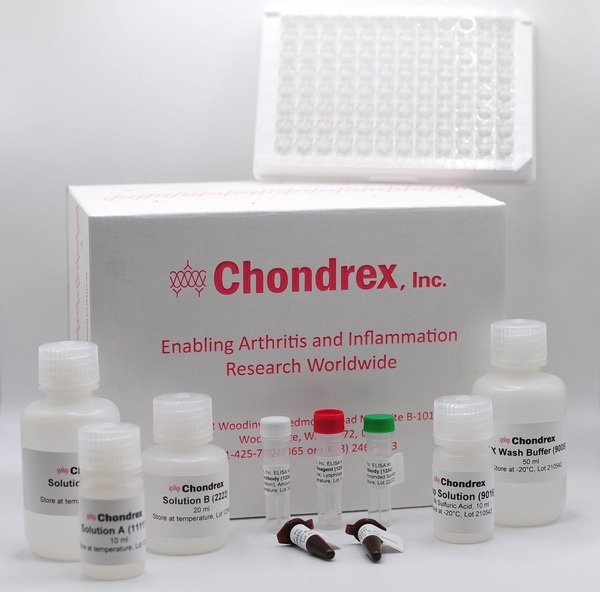Hemoglobin is a heme protein carried by erythrocytes responsible for transport of oxygen from the lungs to the rest of the body. Low hemoglobin levels in erythrocytes or low erythrocyte numbers in blood deprives the body of oxygen, a condition termed anemia. This oxygen deficit can cause dizziness or headaches, while severe or long-lasting anemia can damage organs in the body and even result in death. Anemia is also a complication of various inflammatory diseases such as sepsis (1-3) and autoimmune diseases (4, 5), and has been observed in rodent disease models of inflammatory bowel disease (IBD) (5, 6), colitis (7), sepsis (8), and autoimmune hemolytic anemia (9-12).
Since hemoglobin levels correlate to the oxygen carrying-capacity of blood, hemoglobin is a useful marker of anemia to evaluate disease severity and effectiveness of treatments. A standard hemoglobin assay utilizes the toxic cyanmethemoglobin method, however Chondrex, Inc. introduces a safe non-cyanide hemoglobin assay kit (13, 14). This assay kit correlates with the cyanmethemoglobin method and can be used to evaluate anemia in mouse sepsis models and mouse IBD model, as well as other disease models. Chondrex, Inc. also provides related products such as, an HMGB1 detection kit (Sepsis), Fluorescent-labeled Dextrans (IBD), a D-xylose assay kit, and Mouse anti-bacterial antibody ELISAs (IBD).
Hemoglobin Assay kit
| Product | Catalog # | Price (USD) | |
|---|---|---|---|
 |
Hemoglobin Assay kit | 6024 | 120.00 |
References
1. D. S. Kempeet al., Suicidal erythrocyte death in sepsis. J Mol Med (Berl) 85, 273-281 (2007).
2. J. A. Russell, Management of sepsis. New England Journal of Medicine 355, 1699-1713 (2006).
4. G. Weiss, L. T. Goodnough, Anemia of chronic disease. N Engl J Med 352, 1011-1023 (2005).
8. S. Rivera, T. Ganz, Animal models of anemia of inflammation. Semin Hematol 46, 351-357 (2009).
12. D. A. Schirmeret al., Mouse models of IgG- and IgM-mediated hemolysis. Blood 109, 3099-3107 (2007).